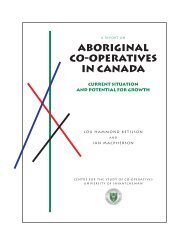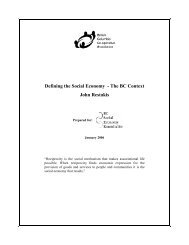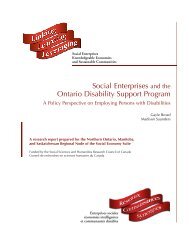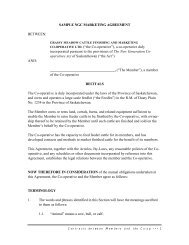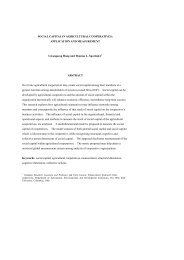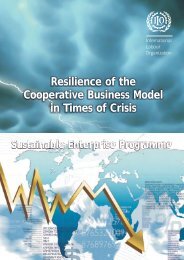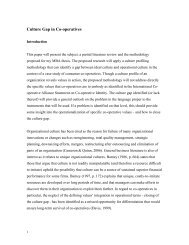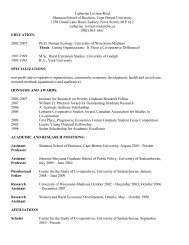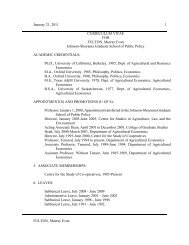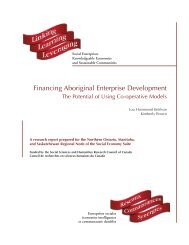Network Diversity - Centre for the Study of Co-operatives
Network Diversity - Centre for the Study of Co-operatives
Network Diversity - Centre for the Study of Co-operatives
Create successful ePaper yourself
Turn your PDF publications into a flip-book with our unique Google optimized e-Paper software.
14 V A N V L I E T<br />
D I S C R I M I N A T I O N<br />
IS S U E S S U R R O U N D I N G D I S C R I M I N A T I O N M U S T B E A D D R E S S E D I F A N O R G A N I Z A T I O N<br />
wishes to promote diversity. Barclay (1991) defines discrimination as making “a distinction<br />
in favour <strong>of</strong> or against a person or thing on a categorical basis ra<strong>the</strong>r than according to actual<br />
merit” (28). Discrimination takes two main <strong>for</strong>ms. The first is individual discrimination, which<br />
refers to personal attitudes and opinions; it can include sexist, racist, or homophobic language,<br />
social exclusion, and sexual harassment. The second is systemic discrimination, which refers to<br />
“organizational rules and procedures which <strong>of</strong>ten are not intended to discriminate, but do so”<br />
(28). This <strong>for</strong>m <strong>of</strong> discrimination includes such things as <strong>the</strong> white, male-dominated corporate<br />
culture, exclusionary corporate policies, and exclusionary membership criteria. Discrimination<br />
is <strong>of</strong>ten an invisible and sometimes even unconscious factor in maintaining <strong>the</strong> status quo and<br />
thus preventing diversity from occurring in organizations. Clear and en<strong>for</strong>ced organizational<br />
antidiscrimination policy, antidiscrimination training, and educational workshops and materials<br />
will all help to increase awareness <strong>of</strong> this issue. These ef<strong>for</strong>ts should make members feel<br />
more com<strong>for</strong>table in reporting any discriminatory behaviour <strong>the</strong>y may experience, and secure<br />
in <strong>the</strong> knowledge that <strong>the</strong> organization will take action to prevent it from recurring.<br />
S E X U A L O R I E N T A T I O N<br />
HAV I N G A D I V E R S E O R G A N I Z A T I O N I S N O T S I M P L Y A M A T T E R O F E X T E R N A L<br />
appearance. It is also important to look at issues surrounding sexuality that may be barriers<br />
to nonheterosexual people becoming involved in co-operative organizations. While co-ops<br />
C E N T R E F O R T H E S T U D Y O F C O - O P E R A T I V E S




